

La chambre ardente was the name given to a special court established for the trial of heretics in France during the reign of Francis I in the 16th century. The name has been translated to mean "the fiery chamber."


La chambre ardente was the name given to a special court established for the trial of heretics in France during the reign of Francis I in the 16th century. The name has been translated to mean "the fiery chamber."
Special courts designated for the exclusive trials of heretics in France were first instituted in the Parlement de Rouen on April 17, 1545. [1]
At that time approximately two years before the death of Francis in March 1547, the number of heretics in prisons in Normandy awaiting trial was so great that the prisons could barely contain them. To remedy the situation, Francis "authorized the erection in the Parliament of Rouen of a special chamber, consisting of ten or twelve of the most learned and zealous judges, to take cognizance of the crime of heresy to the exclusion of all other employments".
Approximately two years later when Francis died and Henry II took the throne, he deemed the special courts in Rouen as a successful experiment and instituted similar courts "upon a larger scale in the highest court of the realm, the Parlement of Paris. The members of the new commission were selected from among the parliamentary counselors who were removed from any suspicion of heresy and known to be active in the prosecution of offenses against 'mother holy Church.'" [2] It is believed that this special court in Paris was instituted sometime between December 1547 and May 1548. [3] [4]
This special court ultimately came to have a reputation of "sending to the flames as many as fell into its hands" and gained the unofficial designation of "la chambre ardente". [2] Despite its reputation, an examination of 323 case histories pertaining to individuals on trial during a twenty-three-month time period from May 1548 to March 1550 reveals that many of those arrested and put on trial for heresy escaped a dire punishment.
Of the 323 cases examined, approximately two-thirds of the cases had come to a final verdict. Of the sentences pronounced, 39 individuals were able to vindicate themselves and were set free with only an injunction that they live "as good Christians in the holy Catholic faith". The punishment associated with 142 cases was amende honorable meaning an "honorable penalty". The "penalties" in these cases were fairly mild and included fines, public ceremonies of penance, banishments, and beatings with warnings never to engage in heresy again. And finally, 37 sentences of death were pronounced of which 6 individuals were put to death by fire while 31 individuals were simply hung. [5] [6]
It is also interesting to examine the occupations of the 323 individuals on trial for heresy. Almost fifty percent of those on trial or 153 individuals were lower and middle class artisans, merchants, and small shop owners. Nearly a third of those on trial or 111 individuals were members of the clergy. 47 individuals were members of the upper class with professions such as barristers and solicitors. Twelve individuals were nobles. While it might appear that the focus of heresy prosecution was the lower or middle class, the greatest target was clergymen as their percent of the population was less than five percent. [7]
No peasants were included among those on trial. This can likely be explained by the fact that the Protestant theology as taught by John Calvin and other reformers was unattractive to peasants. The ideas and beliefs of the Protestant theology were alien. The Protestant theology was a "religion of the book" that made intellectual demands upon those wishing to explore and learn. The books and pamphlets espousing John Calvin's works were written in either French or Latin. Such intellectual demands were beyond the capabilities of an uneducated peasantry that could neither afford books nor read anything but the local patois that dominated the rural areas. As so, most peasants at the time retained their traditional allegiance and belief in the tenets of the Catholic Church. [8]
By an edict on November 19, 1549, Henry II relieved French judges of their duties associated with these special courts effective on January 11, 1550. The attempt to eliminate heresy with special courts had proved to be a failure, and a new approach of sending heretics to the bishops and Church courts for trial was to be implemented. Three years later, the King's Edict of Saint Germain en Laye on March 1, 1553, reestablished the courts. It is unclear as to how long the revived tribunals continued thereafter before permanently being abolished. [9]

The Inquisition was a Catholic judicial procedure where the ecclesiastical judges could initiate, investigate and try cases in their jurisdiction. Popularly it became the name for various medieval and reformation-era State-organized tribunals whose aim was to combat heresy, apostasy, blasphemy, witchcraft, and other dangers, using this procedure. Studies of the records have found that the overwhelming majority of sentences consisted of penances, but convictions of unrepentant heresy were handed over to the secular courts for the application of local law, which generally resulted in execution or life imprisonment. If the accused was known to be lying from other credible evidence, a single short application of non-maiming, unbloody torture was allowed, to corroborate that evidence.

The Medieval Inquisition was a series of Inquisitions from around 1184, including the Episcopal Inquisition (1184–1230s) and later the Papal Inquisition (1230s). The Medieval Inquisition was established in response to movements considered apostate or heretical to Roman Catholicism, in particular Catharism and Waldensians in Southern France and Northern Italy. These were the first movements of many inquisitions that would follow.

Francis II was King of France from 1559 to 1560. He was also King of Scotland as the husband of Mary, Queen of Scots, from 1558 until his death in 1560.

The French Wars of Religion were a series of civil wars between French Catholics and Protestants from 1562 to 1598. Between two and four million people died from violence, famine or disease directly caused by the conflict, and it severely damaged the power of the French monarchy. One of its most notorious episodes was the St. Bartholomew's Day massacre in 1572. The fighting ended with a compromise in 1598, when Henry of Navarre, who had converted to Catholicism in 1593, was proclaimed King Henry IV of France and issued the Edict of Nantes, which granted substantial rights and freedoms to the Huguenots. However, Catholics continued to disapprove of Protestants and of Henry, and his assassination in 1610 triggered a fresh round of Huguenot rebellions in the 1620s.

Michel de l'Hôpital was a French lawyer, diplomat and chancellor during the latter Italian Wars and the early French Wars of Religion. The son of a doctor in the service of Constable Bourbon he spent his early life exiled from France at Bourbon's and then the emperors court. When his father entered the service of the House of Lorraine, he entered the patronage network of Charles, Cardinal of Lorraine. Through his marriage to Marie Morin, he acquired a seat in the Paris Parlement. In this capacity he drew up the charges for the king, concerning the defenders of Boulogne who surrendered the city in 1544, before taking a role as a diplomat to the Council of Trent in 1547. The following year he assisted Anne d'Este in the details of her inheritance to ensure she could marry Francis, Duke of Guise.
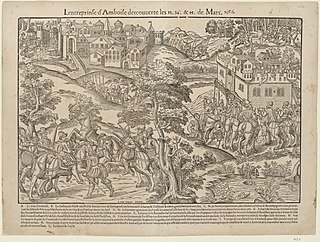
The Amboise conspiracy, also called Tumult of Amboise, was a failed attempt by a Huguenot faction in France to gain control over the young King Francis II and to reverse the policies of the current administration of Francis, Duke of Guise and Charles, Cardinal of Lorraine through their arrest, and potentially execution. Malcontent factions of Huguenots had been chafing under the French crown since the reign of Henry II and with the arrival of a new young king, saw their chance to take power for themselves. However the plot was uncovered ahead of time, and the Guise were ready for them. As such hundreds would be arrested, and many killed. Louis I, Prince of Condé was suspected of involvement, however he was able to flee south, and it was only after some months that the Guise were able to put him on trial. Shortly thereafter, the sickly Francis II died, their hold on the administration collapsed, and with it the conviction of Condé. This tumult would be one of the key steps in the collapse of crown authority that led to the first French War of Religion.

Renée of France, was Duchess of Ferrara from 31 October 1534 until 3 October 1559 by marriage to Ercole II d'Este, grandson of Pope Alexander VI. She was the younger surviving child of Louis XII of France and the duchess regnant Anne of Brittany. In her later life, she became an important supporter of the Protestant Reformation and ally of John Calvin.

The Edict of Saint-Germain, also known as the Edict of January, was a landmark decree of tolerance promulgated by the regent of France, Catherine de' Medici, in January 1562. The edict provided limited tolerance to the Protestant Huguenots in the Catholic realm, though with counterweighing restrictions on their behaviour. The act represented the culmination of several years of slowly liberalising edicts which had begun with the 1560 Edict of Amboise. After two months the Paris Parlement would be compelled to register it by the rapidly deteriorating situation in the capital. The practical impact of the edict would be highly limited by the subsequent outbreak of the first French Wars of Religion but it would form the foundation for subsequent toleration edicts as the Edict of Nantes of 1598.

Louis de Lorraine, cardinal de Guise et prince-évêque de Metz was a French Roman Catholic cardinal and Bishop during the Italian Wars and French Wars of Religion. The third son of Claude, Duke of Guise and Antoinette de Bourbon he was destined from a young age for a church career. At the age of 18 he was appointed Bishop of Troyes, a position he could only serve in an administrative capacity as he would not reach the Canonical Age for another 9 years. Having served in this position for 5 years, he transferred to become Bishop of Albi, staying in this role until 1561, when he was replaced due to his lethargic suppression of 'heresy'. From here he moved to become Archbishop of Sens, a see he would hold from 1561 to 1562, during which time a massacre of Protestants would occur in the city. By 1562 he decided to retire from active episcopal involvement. Nevertheless, he would become Prince-Bishop of Metz in 1568, an office he would hold until his death a decade later. While he lacked much interest in spiritual matters and was renowned for his drinking, he built up a considerable empire of abbeys during his life, which he passed on to his nephew Claude, chevalier d'Aumale.
Protestantism originated from the Protestant Reformation of the 16th century. The term Protestant comes from the Protestation at Speyer in 1529, where the nobility protested against enforcement of the Edict of Worms which subjected advocates of Lutheranism to forfeit all of their property. However, the theological underpinnings go back much further, as Protestant theologians of the time cited both Church Fathers and the Apostles to justify their choices and formulations. The earliest origin of Protestantism is controversial; with some Protestants today claiming origin back to people in the early church deemed heretical such as Jovinian and Vigilantius.

The siege of Rouen was a key military engagement of the first French War of Religion. After having been seized by those opposing the crown on 16 April, the siege, beginning on 28 May and culminating on 26 October brought the important city of Rouen back into the crowns control. The fall of Rouen would set the stage for the main battle of the war at Dreux several months later.

The Edict of Châteaubriant, issued from the seat of Anne, duc de Montmorency in Brittany, was promulgated by Henri II of France, 27 June 1551. The Edict was one of an increasingly severe series of measures taken by Henry II against Protestants, whom he regarded as heretics. In the preamble, the Edict frankly reported that previous measures against heresy in the kingdom had proved ineffectual. "Heretics", the Edict reported, met in conventicles, infected schools, invaded the judicial bench and forced toleration upon judges. To ensure more rigorous judgements, in 1547 Henri had already created a special judicial chamber drawn from members of the parlements, solely to judge cases of heresy (called by Protestants the Chambre Ardente. The Edict contained quite detailed provisions: it called upon the civil and ecclesiastical courts to detect and punish all heretics, and placed severe restrictions on Protestants, including loss of one-third of property granted to informers, who were also granted immunity and confiscations of property both moveable and immovable belonging to those who had fled to Geneva, with whom the king's subjects were forbidden to correspond or to send money. Fourteen of its forty-six articles were concerned with censorship; its terms strictly regulated the press by prohibiting the sale, importation or printing of any book unapproved by the Faculty of Theology at the University of Paris, then or, now it was implied, in the future. Booksellers were to display a copy of the Faculty's printed list of prohibited books alongside a list of books for sale. Delegates of the Faculty were to make visits twice a year to each bookseller to ensure that the provisions were complied with. Since 1542 it had been a requirement that any shipment of books into France be opened and unpacked in the presence of delegates from the Faculty of Theology, which now, according to Roger Doucet, "assumed the intellectual direction of the kingdom."

Heresy is any belief or theory that is strongly at variance with established beliefs or customs, particularly the accepted beliefs or religious law of a religious organization. A heretic is a proponent of heresy.

The Parlement of Rouen, also known as the Parlement of Normandy after the place where it sat, was a provincial parlement of the Kingdom of France. It replaced the ancient court of the exchequer of Normandy, set up by Rollo, first duke of Normandy.
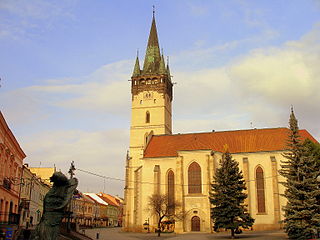
In 16th-century Christianity, Protestantism came to the forefront and marked a significant change in the Christian world.
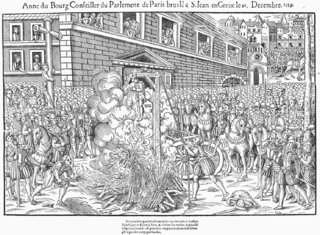
The trial and execution of Anne du Bourg was a critical event in the history of religious conflict in Paris, prior to the outbreak of the French Wars of Religion three years later. Anne du Bourg, a judge in the Parlement of Paris, would be executed, after calling King Henry II an adulterer and blasphemer, and refusing to affirm the Real presence. He would be garrotted and burned on 23 December 1559. Several of his colleagues who had been arrested along with him, would be forced to recant their beliefs before returning to re-join the court. His trial would inflame religious tensions in Paris, leading directly to the assassination of President Minard, and contributing to the powder keg that exploded in the riot of Saint Medard a few months later.

The Edict of July, also known as the first Edict of Saint-Germain was a decree of limited tolerance promulgated by the regent of France, Catherine de' Medici, in July 1561. Whilst it emphasised a continued commitment to banning Huguenot worship in France, it granted pardon for all religious offenses since the reign of Henry II, who had died two years earlier, which was a victory for the Protestant community. A further Protestant victory was in the reaffirmation of the removal of the death penalty for heresy cases. The edict would be overtaken by events, and ultimately left unenforced as France moved first to the landmark Edict of Saint-Germain and then into the Wars of Religion.
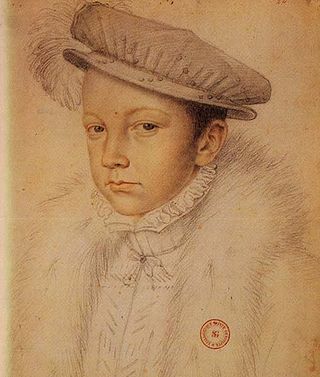
The Edict of Romorantin, was a decree designed to alter the prosecution of heretics, promulgated by the King of France, François II, in May 1560. The decree came in the wake of the Amboise conspiracy in which many Protestant Huguenots had participated. Conscious that the previous policy of persecution embodied in the edicts of Châteaubriant and Compiègne had thus failed, the crown and the chancellor altered their strategy by distinguishing for the first time between heretics and rebels. The edict would transfer the prosecution of heretics who had committed no other offence to the ecclesiastical courts, which lacked the power to give death sentences. The edict would be confirmed in January 1561 then superseded, first by the Edict of July, which maintained its provision concerning ecclesiastical courts, and by the more radical Edict of Saint-Germain.

The Edict of Amboise (1560) was a decree that created the framework to separate heresy from sedition, promulgated by the young king Francis II on the advice of his council and mother Catherine de' Medici. The edict was the first promulgated in France that lessened the persecution of Huguenots through the provision of amnesty for past religious crimes on the condition the offender returned to the Catholic fold. The edict was published during the Amboise conspiracy whilst the royal court was resident in the Château d'Amboise and their authority over France was shaken. It would be superseded first by the Edict of Romorantin in May of the same year, then the Edict of July and finally the Edict of Saint-Germain
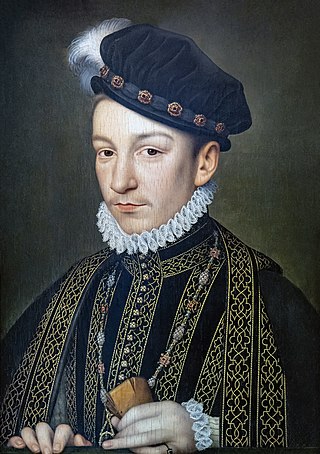
The Edict of 19 April was a religious edict promulgated by the regency council of Charles IX of France on 19 April 1561. The edict would confirm the decision of the Estates General of 1560-1 as regarded the amnesty for religious prisoners. The edict would however go further in an effort to calm the unrest that was sweeping France, outlawing the use of religious epithets and providing a pathway for religious exiles to return to the country. Despite not being an edict of toleration for Protestantism, the more conservative Catholics would interpret the edict as a concession to the Huguenots, leading to the Parlement of Paris to remonstrate the crown. The edict would be endorsed and furthered in the more sweeping Edict of July a few months later, before it in turn was superseded by the first edict of toleration, the Edict of Saint-Germain.
{{cite book}}: CS1 maint: location missing publisher (link)